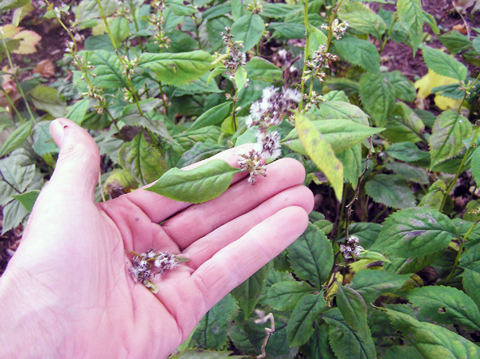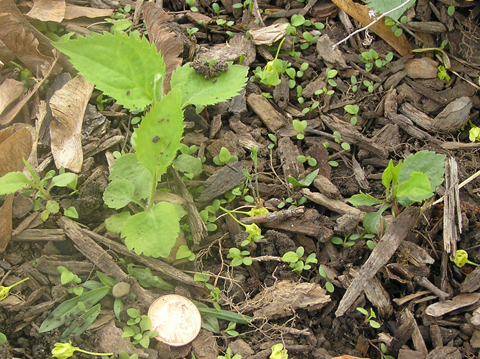 |
| Home | Ordering By Mail | Purchase Manual: Using Native Plants in Urban Landscapes |
|
|||||
Species Name: Solidago flexicaulis, Solidago caesia
Common Name: Zig zag goldenrod, Blue stemmed goldenrod
Zone: 3 to 8
Distribution: Nova Scotia south to Virginia
Seed collection: See matures in mid to late fall. The seed is very tiny, nearly the consistency of dust. Each seed is attached to silky down enabling easy wind dispersal. The seed matures in the order the flowers are produced from the bottom of the plant towards the top. Collect seed when most of the seed at the top of the stem has dried and begins to fluff.
Seed handling: To harvest, strip the seeds, along with the leaves, from the whole stem. Place seed in a paper bag to dry. Seed can be stored dry for several weeks if seed will be planted out in the fall. Cold/moist stratify seed if seed will be stored for spring planting. Large quantities of dry seed can be broadcast to establish goldenrod over large areas.
Germination requirements: Seed requires one to two months of cold moist stratification to germinate. Seed readily germinates the first spring if properly treated. For best results fall plant in flats or in the soil. Because the seed is so small sow seed on the surface of the soil. Do not cover the seed with soil or leaf litter. The seed germinates easily and the seedlings grow rather quickly. Sizable plants can be grown in a single season. A carpet of seedlings will quickly surround established plants and wind dispersed seed will start popping up in unexpected places.
Ecology: The woodland |goldenrods are very useful plants for restoring degraded and deer ravaged woodland as golden rod is highly deer resistant. Goldenrods self propagate both vegetatively from the stoloniferous roots and from seed. Most plant communities are composed of one or two dominant plant species. The goldenrods fill that ecological niche. They grow in great profusion, they stabilize the soil and cover any bare soil. They also provide important ground level cover for birds in the woodland understory. They provide an important source of nectar for insects when in flower as well as a being a host plant for many foliage feeding insects.
Goldenrod can be used to successfully compete with invasive woodland plants such as garlic mustard. Goldenrod can be established from seed while control is being implemented for garlic mustard. Goldenrod will gradually take the place of garlic mustard and effectively compete with it.
The Goldenrods are adaptable to nearly any soil type from dry to moist and from full shade to sun. Golden rod is especially useful for establishment in dry woodland understory where few other herbaceous plants will grow.

Strip seed from the plant when the seed down begins to fluff.

Goldenrod seedlings at various stages after germinaiton.
this page updated February 5, 2011